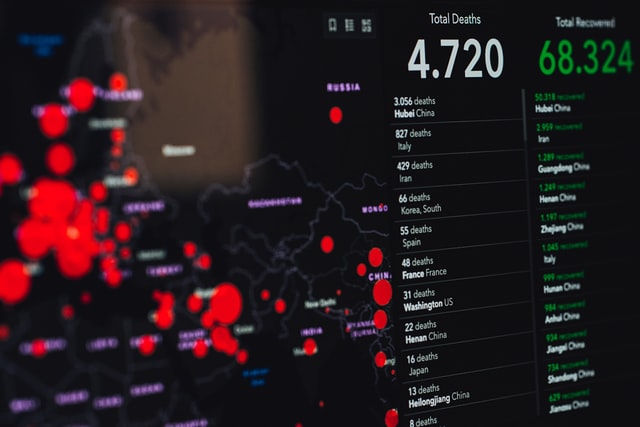The following post is a guest contribution by Lisa Roberts with WP Full Care, the author’s views may not be the same as our own.
The world of marketing is closely intertwined with real-world events. Whenever there’s a tectonic shift in the global social order, the changing paradigm is bound to affect digital marketing as well. At the end of the day, any type of marketing is just a message the seller is trying to convey to the buyer. When you strip away all of the technicalities, we are all just people. And that means companies need to change their approach to digital marketing in the COVID-19 era. How have buyer personas been altered by this global upset? And how should businesses respond? We will examine the situation in detail below.
Initial Changes
In tune with the economic globalization of the past few decades, it took only a couple of weeks for the COVID-19 pandemic to reach global proportions once it left Wuhan. The measures that had to be taken after this has forced many businesses worldwide to quickly adapt to the newfound circumstances. With this in mind, we’ll take a look at how the pandemic has affected the messaging businesses have been trying to convey via digital marketing and traditional analogue outlets as well.

Quarantine
For more than a month, much of the developed world had implemented tough quarantine measures. These restrictions were necessary to limit the spread of the pandemic and ease the burden on local health systems everywhere. For the digital marketing sector, this is where the initial changes began. During this period, the way people prioritized their purchasing decisions changed practically in an instant.
The consumer economies of the 21st century were accustomed to people fulfilling their secondary and tertiary needs by purchasing a vast array of products.
If we take a look at the average sales funnel for any kind of product online, one thing is clear — regardless of whether we’re talking about miscellaneous items, software solutions, or home appliances, the content that promoted it created a sense of urgency. And this worked because people truly felt that they needed these products to solve some sort of practical issue in their lives. Having a website suitable for your SEO efforts and a decent product was all that it took for online marketing to be a success.

Purchasing Power and Priorities
During the days of quarantine, people’s priorities reverted to those that were not in question for almost a century in the developed world — having shelter and basic medical supplies, as well as food and water. No amount of SEO could change the fact that surgical masks were sold out globally in a few short days. Particularly for small businesses that weren’t huge on branding before, conveying the right humanitarian message to your target audience became more crucial than ever before.
Both the technical and creative sides of digital marketing had to adjust to these changes. Search engine optimization plans were thrown out of the window at the very moment when the scale of the pandemic became apparent to everyone. Suddenly, every single niche had to appear contemporary and in-the-moment through COVID-19 related content. Whether it’s fishing equipment or time tracking software, every SEO expert out there had to start optimizing for COVID-19.
On the other hand, marketers focused on copywriting and creative pitches faced different problems. They needed to keep demonstrating the urgency and need for certain products that people no longer viewed as essential. In that situation, many companies whose marketing focused on the advertisement of physical products had to think about shipping as well.
These companies could be seen stepping up their game in terms of the medical safety of their staff. All consumer-facing businesses tried to ensure their employees were as protected as possible. This was done partly out of concern for the employees, but also due to the message this would send to consumers — the company cares about everyone’s safety.
For a while, online deliveries of non-essential goods took a nosedive. In that time, the sales funnel, and WordPress designs shifted towards upsell pages that contained more bonus offers and free content than ever before. All of this was a necessity for customer retention.
Finally, B2C marketing had to take purchasing power into account as well. In the United States alone, tens of millions of people lost their jobs over just a few weeks. This threatened to start a vicious circle where businesses dependent on customer revenue would go out of business, and more people would lose their jobs yet again. However, a combination of emergency government subsidies and personal savings helped mitigate this issue.
Still, even bigger discount offers had to be implemented; partly due to marketing appeal and purchasing power suddenly going way down.
The Aftermath
As the world slowly returns to normal, or at least the closest semblance of normal, we must ask ourselves — how will this situation affect digital marketing in the long run?
Firstly, it should be noted that the economy has not been fully hit with the disastrous consequences of the coronavirus pandemic just yet. The scale of losses will be more apparent by the end of the year. Suffice it to say that there will be a global recession, which obviously means smaller digital marketing budgets and in-house teams. SEO freelancers are also likely to experience a lower volume of work. After all, the point of marketing, no matter how convoluted, is to lead to a sale. If that is not possible due to other economic circumstances, the demand for SEO optimization and content will be lower for a while.

Also, the brands that managed to come across as human and humanitarian through proper social media responses in the past few weeks will reap incredible long-term rewards. People are not likely to forget who was focused only on their revenue and earnings, and what corporation tried to come across as empathetic.
About the author: Lisa Roberts is a freelance journalist. She writes on various topics and has a keen interest in SEO and its intricacies. An avid movie-goer, she enjoys a good night out as much as a quiet afternoon of writing.







